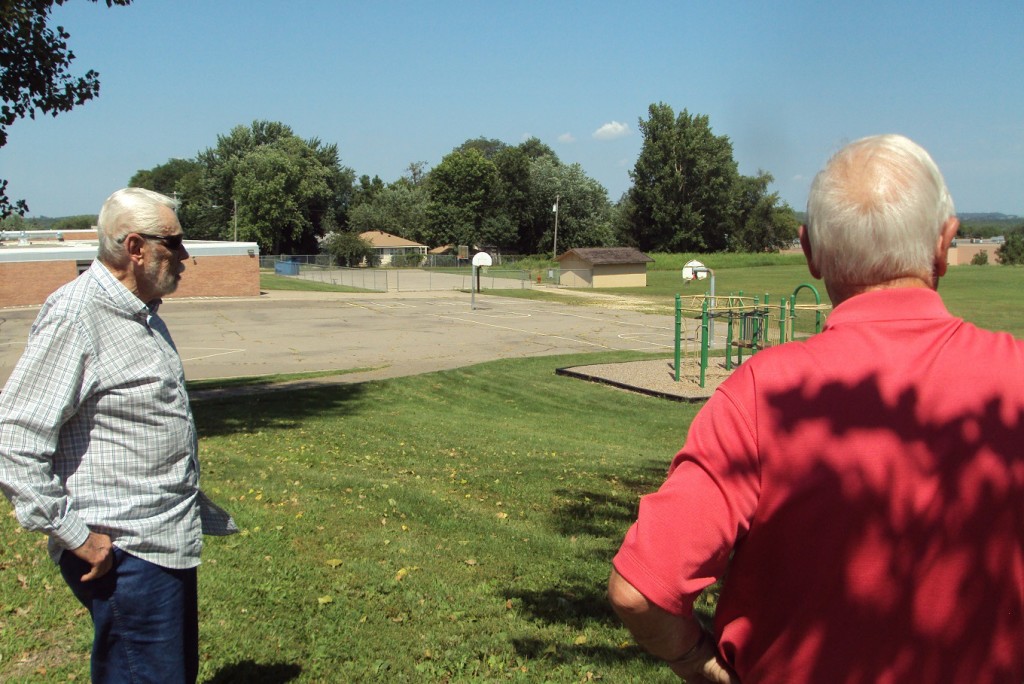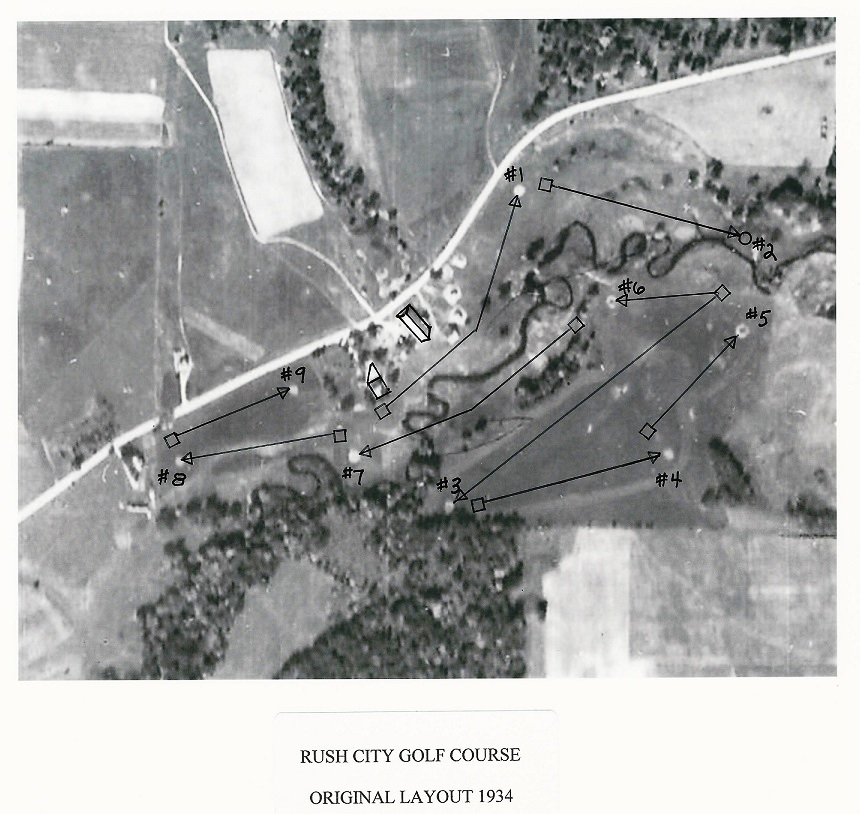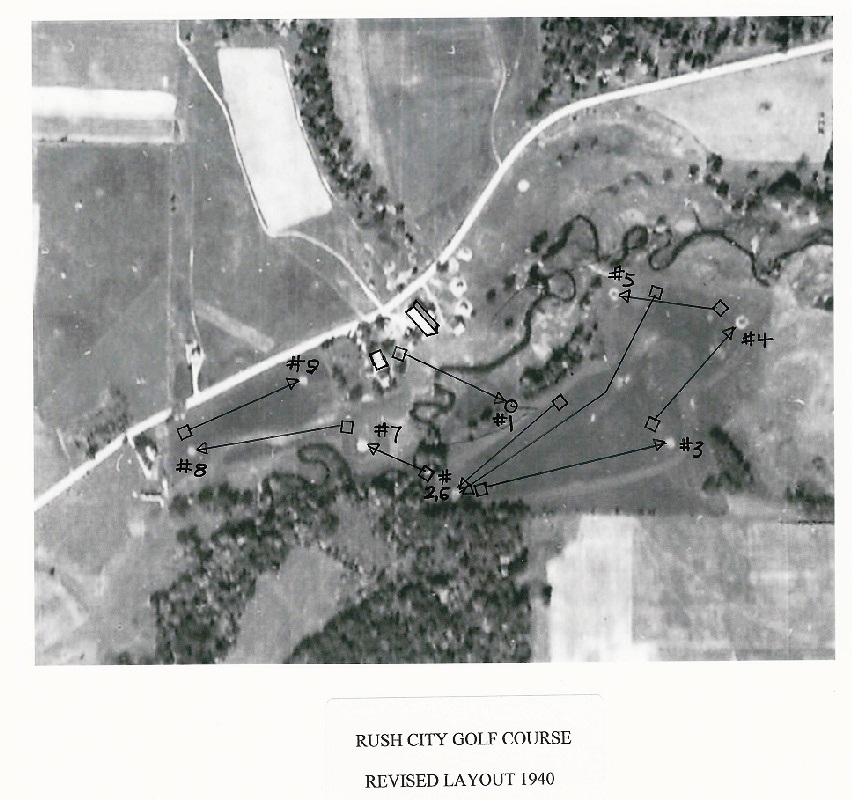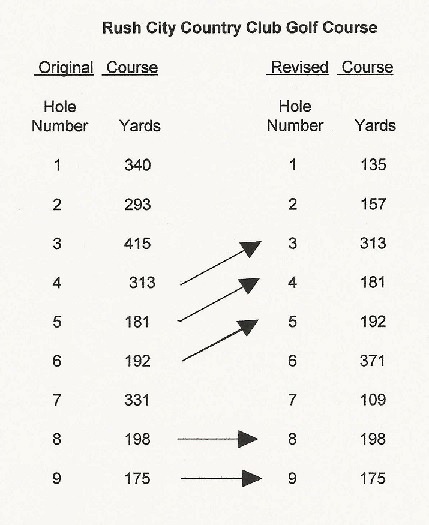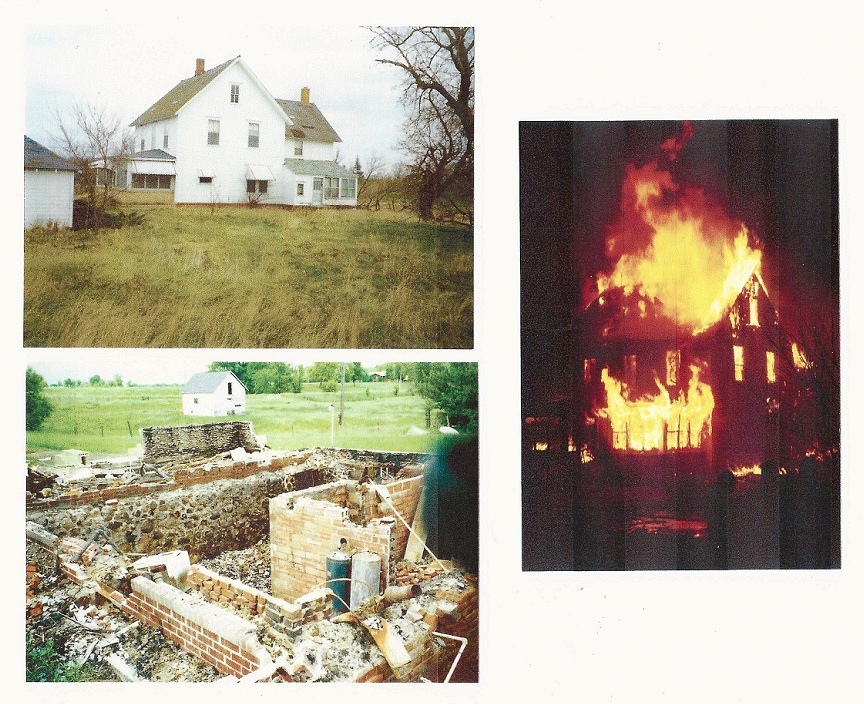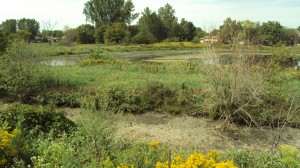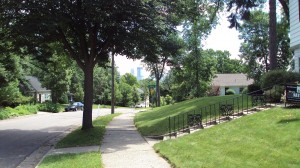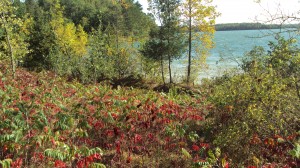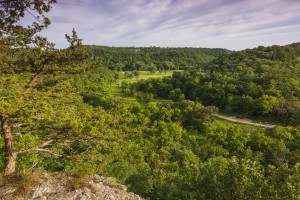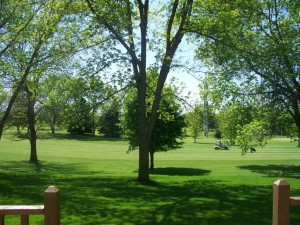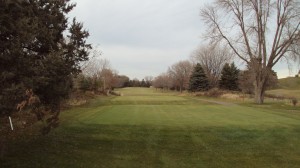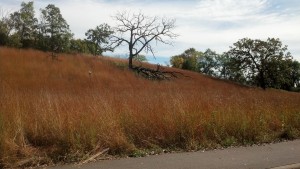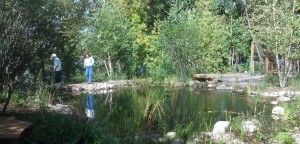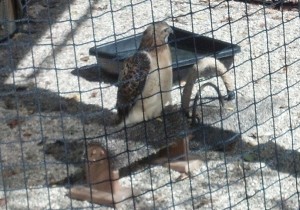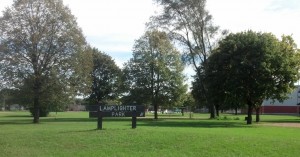In eight days, school will be back in session at John F. Kennedy Elementary in Hastings, and the golf course will again be treated with reckless disregard and utter impunity.
First-graders will run screaming across the greens. Third-graders will jump and stomp and kick at the fairways as if they weren’t even there. Recess monitors will look away, as if nothing untoward were happening. Custodians, in the ultimate show of indifference, will toss garbage all over the George Nelson Historical Monument.
If they only knew …
… yeah, they would just keep doing it.
Understandable. Hey, all the kids see is a schoolyard. Play on.
A few others — very few anymore — also see an old golf course on the Kennedy grounds. Decades ago, a course known as Valley View — it went by other names later in life — occupied what is now the schoolyard, along with part of the current Smead Manufacturing site and undeveloped land to the south and east.
As a golf course site, this tract isn’t particularly notable. There are few elevation changes, no water and no overly distinguishable features. As a bridge, however, the site carries some significance.
And in Hastings, bridges (think Spiral Bridge, 1895-1951; “Big Blue” High Bridge, 1951-2013; and four-laner, 2013-present) are a big deal.
Valley View spanned all or parts of 31 golf seasons in Hastings and bridged a gap between a mostly unknown era of golf in the city, going all the way back to 1924, and the present day.
Oh, yeah. About that monument …
George Nelson, 84, and his friend Bill McNamara, 81, both Hastings residents and former golfers at the Valley View site, rode along one warm August afternoon as I went to visit the place. I turned south from 10th Street East onto Tyler Street. We hung a quick left into the main Kennedy Elementary parking lot and proceeded directly and purposefully across the first fairway, which, yes, makes me not one whit better than the kids who scamper across other sections of the old golf course.
We veered right, into the school’s east parking lot, and Nelson spotted the monument.
“I got a hole in one there,” he said. “Right there.”
“Right there,” at a corner of the east parking lot and on the exact site of the old No. 2 green at Valley View (and I mean exact; you can verify for yourself if you want to take the half-hour to compare old aerial photos to current ones), is a large, steel marker, paying tribute to the ace Nelson recorded 66 years ago while representing Hastings in a high school golf match.
The George Nelson Historic Monument … is a Dumpster.
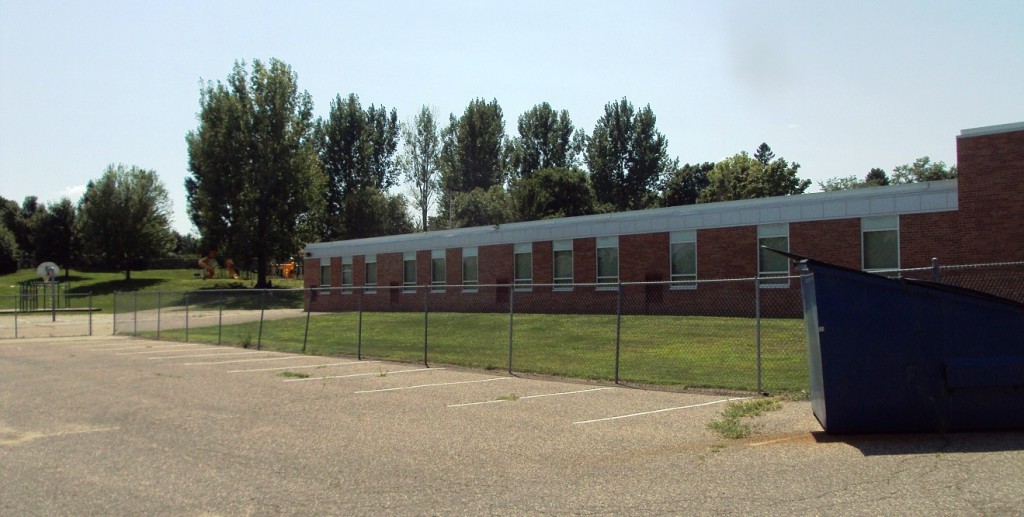
The Dumpster was, of course, not there in 1949 when Nelson pulled a 6-ion from his bag, teed off from a slight rise by where the Kennedy playground now stands, aimed north, landed the ball just short of the green because, he said, that was the only way you could successfully play holes with sand greens, and watched it hop and roll into the hole.
(Aside: I wonder if Nelson is the only person alive to have posted two holes in one on lost Minnesota golf courses. Probably not, but give him credit: In 1951, he used a 2-wood to ace the sixth hole at the original — and now lost — site of Faribault Golf and Country Club. It was the first hole in one in 12 years at the course, which relocated 1956 to a site farther north.)
“We had so much fun out here,” Nelson said to McNamara, which was easy for him to say considering he once had the distinct pleasure of penciling in a “1” on his scorecard.
Nelson and McNamara spent the better part of an hour showing me around the grounds, pointing out where every hole was, 1 through 9, and reminiscing. They were, in effect, preserving the bridge.
———————
Hastings Gazette, July 25, 1924. Headline: Golf Course Assured For Fans Of City.
“Arrangements whereby the sporting element of Hastings will soon be able to gratify their desires for outdoor recreation, were revealed here this week in the announcement that the use of a natural golf course on the Nick Conzemius farm a mile west of the city has been secured by local enthusiasts of the sport.
“The proposed course, starting at the western boundary line of the city proper, extends for fully a mile in a westerly direction and abounds in hazards that should test the bility (sic) of golfers in this vicinity to their hearts’ content it is stated by those who have examined the proffered grounds.”
(Modern-day translation of overwrought prose: Fore!)
This original Hastings golf club, which was given no formal name in the newspaper story, had an initial membership of 25; membership fee was $1. The course consisted of nine holes. Best guess is that this location was near what is now Conzemius Park and Hastings Middle School.
Five years later, the club moved east, according to an entry in The Hastings Archives, by Richard B. Darsow. “1929: The Valley View Golf Course, formerly on the Nick Conzemius Farm, was moved and laid out on the Fred C. Gillitt farm, corner of Tenth and Tyler Streets.”
Most likely, the course became known as Valley View upon the move, not before it. And though Darsow linked Valley View and the Conzemius course, no connection is mentioned in any of five newspaper stories about Valley View’s opening that were forwarded to me by the Dakota County Historical Society and by Cindy Smith, curator of the Pioneer Room in Hastings’ City Hall.
Whomever first wrote about Valley View for the Hastings Gazette veritably swooned over the place, which wasn’t unusual for community newspaper writers of the day. I don’t know, maybe there was a set of shiny, new hickory-shafted MacGregors in it for the author.
“There are few golf courses in the country that excel the Valley View grounds in natural beauty or commanding location,” the Gazette reported on July 26, 1929, a month before the course officially opened. From the first green, the newspaper continued, “the golfer commands a magnificent view of both the Mississippi and Vermillion valley and the distant hills of Wisconsin, some of which are perhaps 10 miles away.” (The view is today obscured by building construction and tree canopies.)
Bluster aside, the Valley View site had staying power. The golf course lasted through 1936, when the club reorganized under the name Hastings Golf Club. It lasted through 1939, when 20 members re-formed under the name Hastings Country Club. It lasted through 1944, during a period when many other Minnesota courses were closing, thanks in part to a group of “war widows,” as the Gazette called them, who pitched in to help maintain the course. It lasted through 1947, when in another reorganization the club’s golfers bought the course from the Gillitt family and incorporated under the name Hastings Country Club (one 1947 newspaper clip refers to a renaming from Hastings Golf Club to Hastings Country Club at that point, but multiple clips through the 1940s refer to the club as Hastings Country Club. The incorporation, however, was a key rite of passage to Hastings CC in its present form). And the golf course lasted through 1949, when club members voted 24-12 not to sell the land to an interested private party.
But in 1957, feeling squeezed by residential growth and looking for room to perhaps expand to 18 holes, members began exploring potential new sites. They found one just over a mile to the southwest. On Sept. 2, 1958, the club purchased the John P. Zweber farm, and on May 1, 1961, Hastings Country Club opened with nine holes off Westview Drive, just a few blocks south of the old Conzemius Farm site. A second nine opened in 1966. The course has generally been held in high regard, and it has hosted many Minnesota Golf Association championship events.
If the Conzemius site is Hastings Lost Golf Course Version 1.0 and the Valley View site is Version 2.0, the current site is, let’s say, Version 2.01. Hastings CC has endured financial troubles in recent years and, after an announcement last fall that the club was ending operations and going up for sale, the course briefly lay dormant this spring before reopening for public play on May 13 and continuing through the present. I made multiple inquiries about its status, but none was answered, and so to the best of my knowledge Hastings Country Club remains for sale, its fate hanging in the balance.
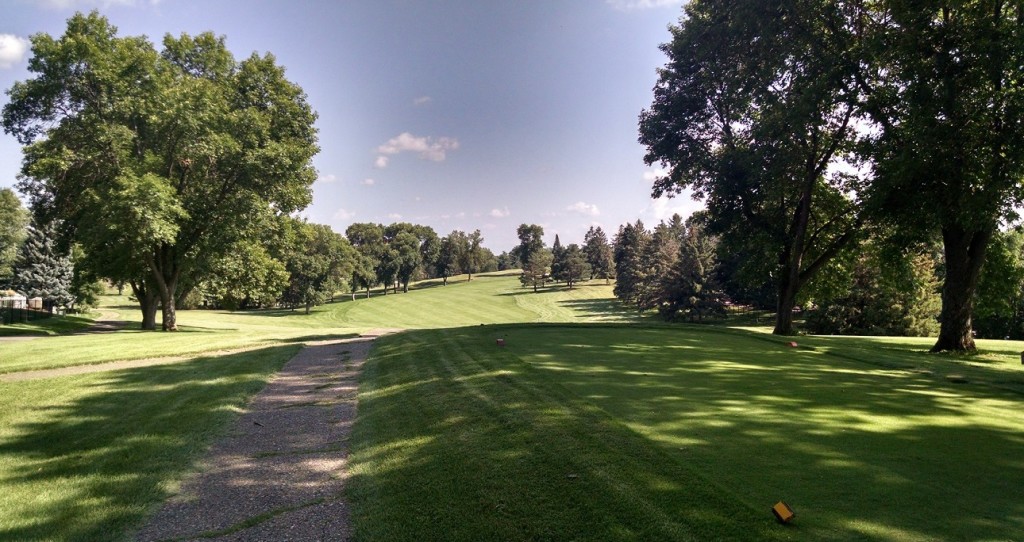
Meanwhile, the Valley View site is a lost course. Gone, but 55 years later, not entirely forgotten.
——————
At the southeast corner of 10th and Tyler stands the Community Education building for Hastings Schools. This is the site of the former clubhouse for Valley View/Hastings Golf Club/Hastings Country Club. The clubhouse originally was a two-story home owned by Gillitt, judging by the 1929 Gazette story on Valley View. A 30- by 55-foot addition was completed in 1955.
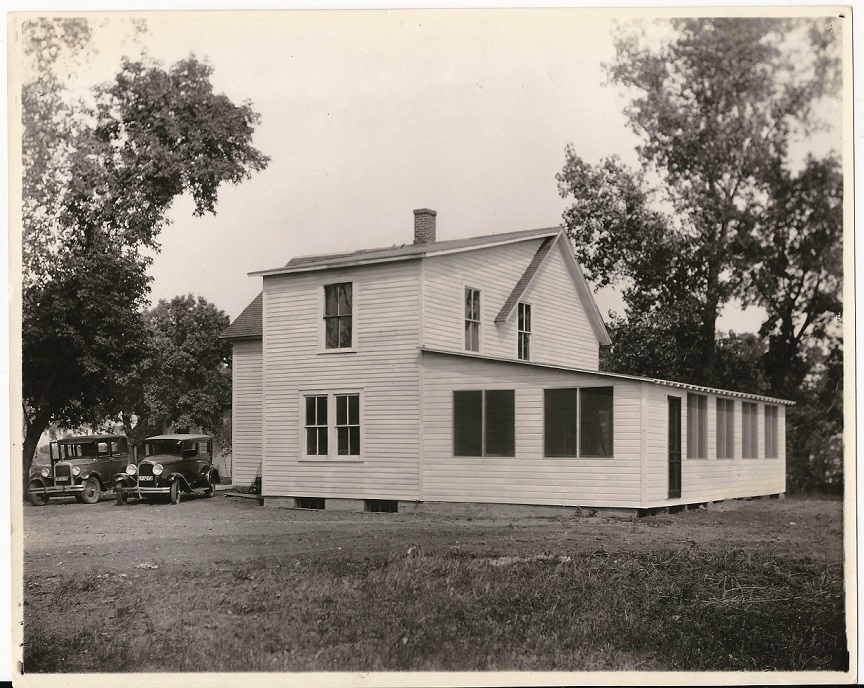
Just to the east, near the corner of 10th and Bailey, was Valley View’s first tee. The opening hole headed south, across land on which Kennedy Elementary was built (meaning kids now whimsically study science where golfers once carefully studied their approach shots), with the green near a corner of the Kennedy grounds, up a small hill and near the school’s playground.
McNamara grew up across 10th Street from the first tee, having moved there as a
12-year-old in 1946. “My aunt Martha Yanz got me started playing with her, and so a life of frustration was born!” he wrote in an email after our visit to the site.
Nos. 2 through 5 ran back and forth, parallel to one another, covering land on the south side of the current Kennedy grounds, including its ballfields. The green for the par-5 third hole was near the corner of 15th and Bailey; the fifth hole ran alongside a railroad spur line now operated by Canadian Pacific. The Veterans Home Bikeway/Mississippi River Regional Trail also runs alongside. “Five was a really good hole,” Nelson said. “Long and challenging, but a good hole.”
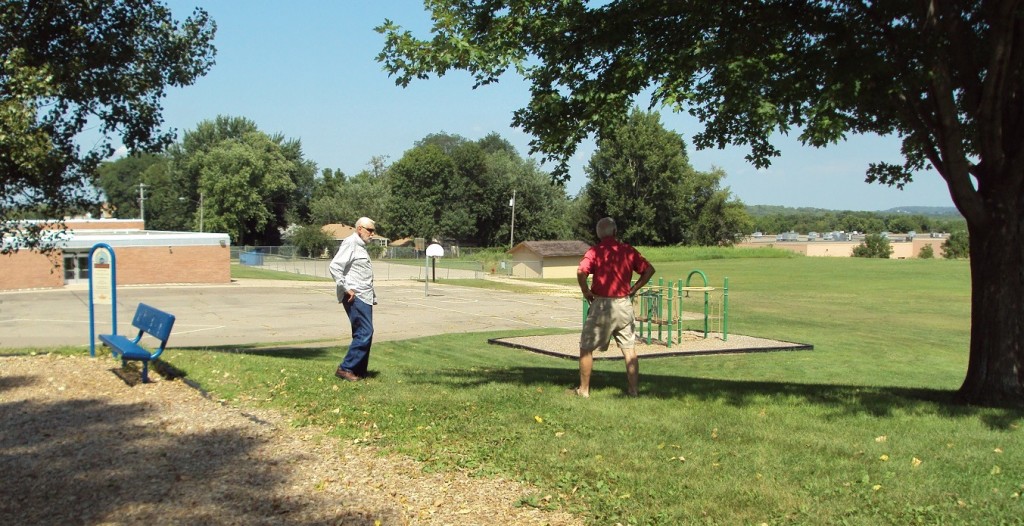
Nos. 6 through 9 were on the east side of the railroad tracks. The sixth was a par 3 with a drop-off on the right; golfers near the sixth green and seventh tee could descend to the Vermillion River springs for a drink of water. The seventh, a short par 4, played north, near what is now a large Public Works hangar, and the eighth, an even shorter par 4, went south. As with any proper closing hole, the ninth returned home. Well, sort of. It started along the east side of the railroad tracks and headed north, parallel with the tracks, covering part of what now would be the Smead back parking lot, driveway and west side of the building. The green was maybe 25 yards from 10th Street and just a few feet from what is now the Smead driveway. From the ninth green to the clubhouse for post-round refreshments, a walk of more than 220 yards was required.
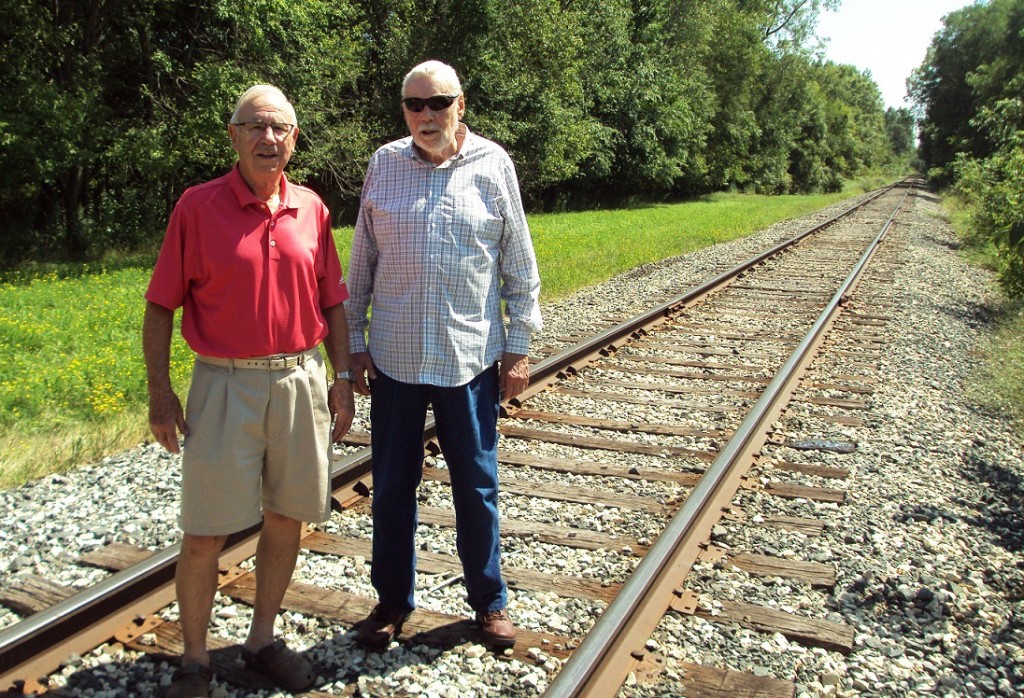
Nelson, who played the course almost daily, he said, remained a Hastings Country Club member when the new course opened in 1961. He is no longer a member there. McNamara did not make the transition to the current Hastings CC site, though he still plays area courses with a group of retirees.
“Living so close,” McNamara wrote in his email, “we kids made the course our own. Golf and ballgames in the summer, skating and sliding on the hills in the winter. My dad cut grass and did maintenance in his spare time, and even did a little golfing.”
Of the course, he wrote: “A short distance, by today’s standards, nine holes, with SAND GREENS, small, hard, oiled sand, flat as a pancake. No water hazards or sand traps, unless you count the greens!
“… It was our course, and we loved it.”
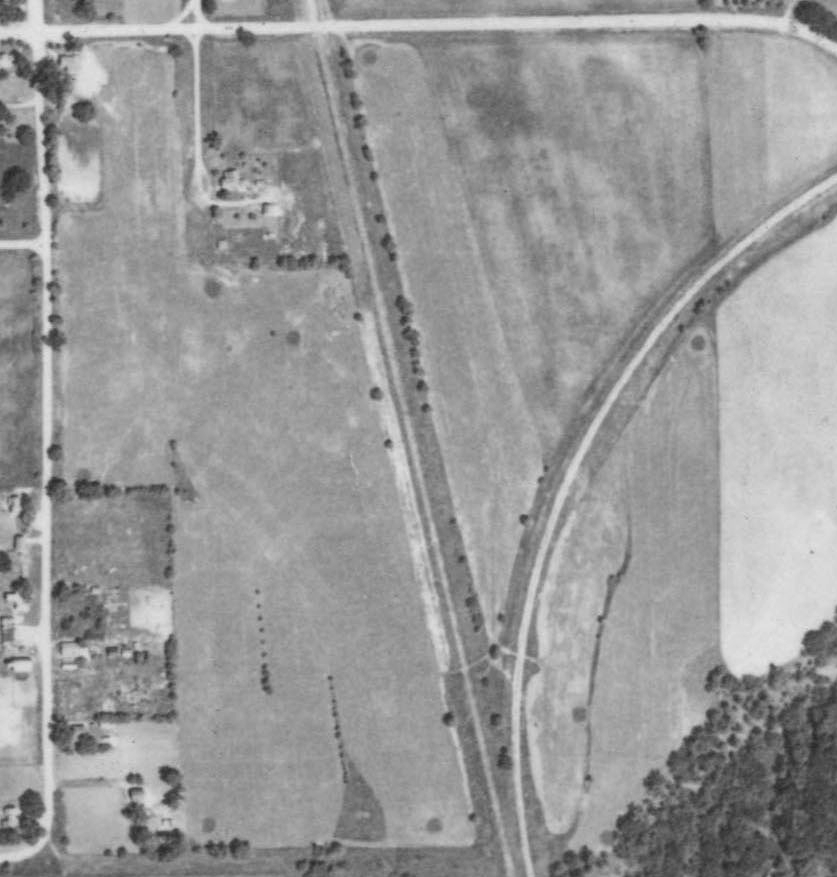
Author’s note: Finding every one of Minnesota’s lost golf courses has proved to be as implausible as winning the Grand Slam. I knew that would be the case when I started researching and writing about them in earnest three years ago, but still …
This is one in a series of posts that catch up with lost golf courses I missed in “Fore! Gone.” The best way to order the book now is through Amazon.com (from the seller named fivestarsales; that’s me) or to contact me directly.
Thanks for reading.
jb
